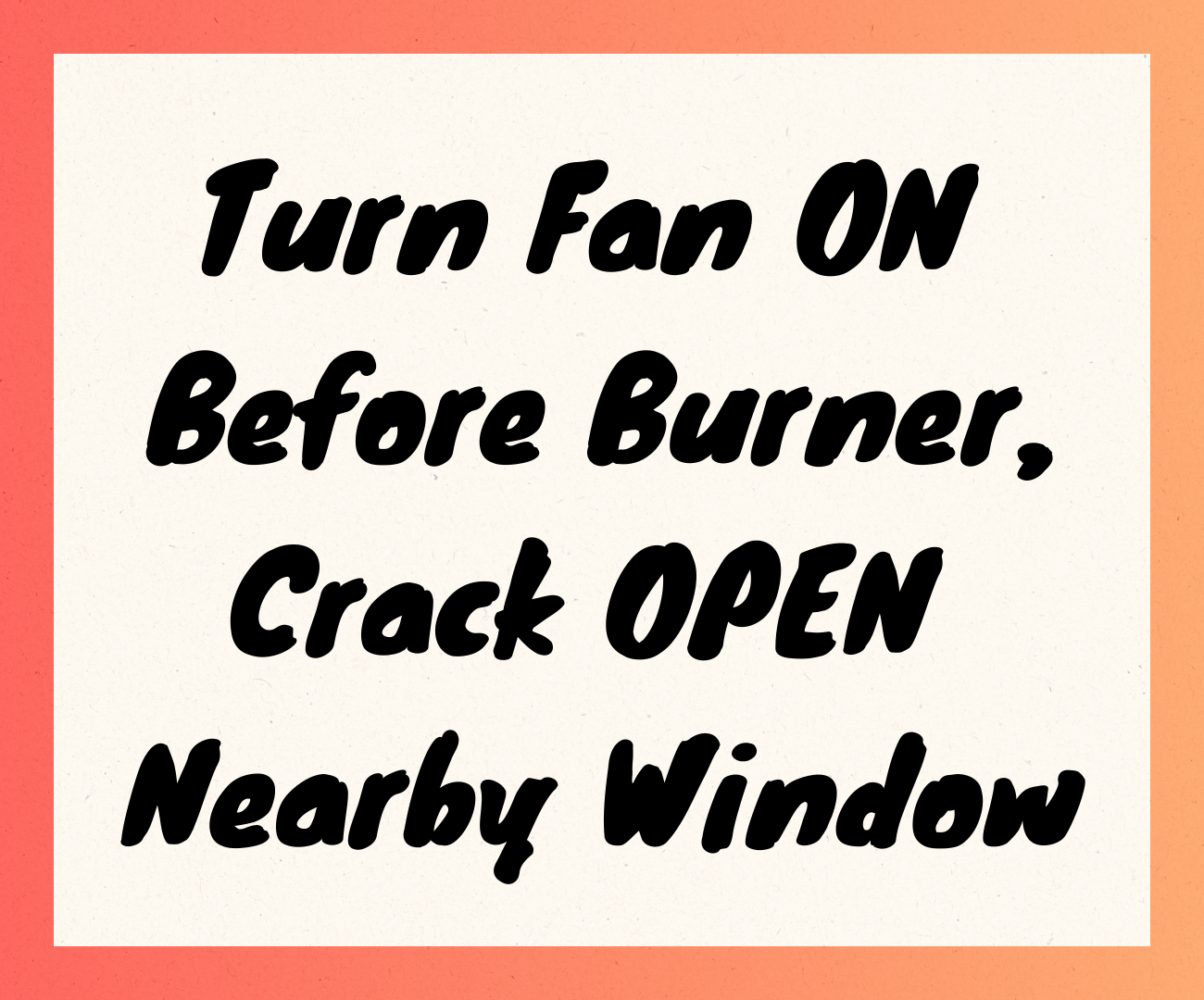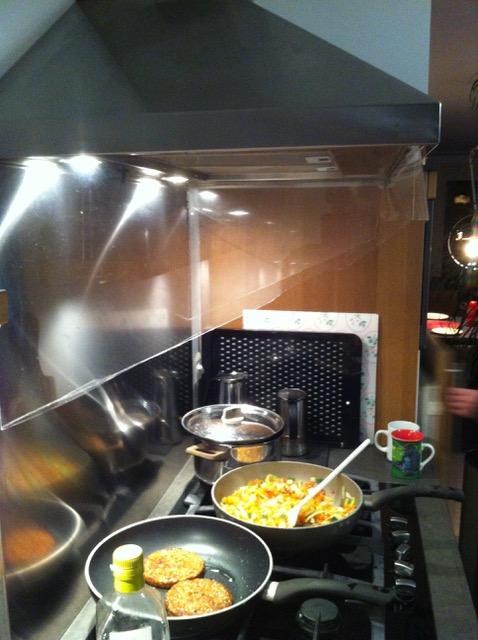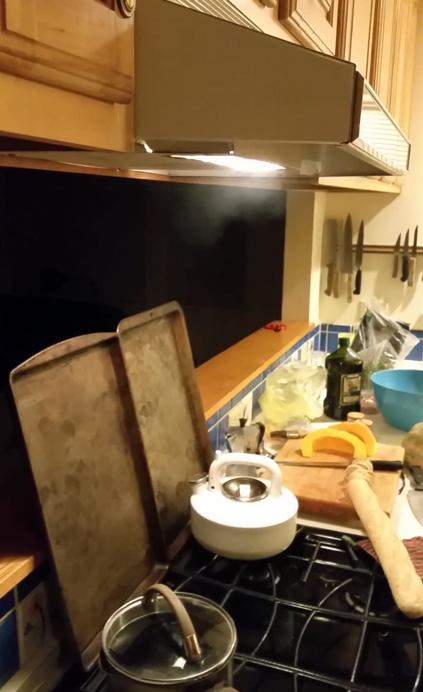Most range hoods currently installed in homes are not very effective due to their design and/or operation and maintenance. Here are some easy things to do to improve the removal of pollutants, odors, grease, and moisture from cooking in your home. More information and webinars on best practices are available at ROCIS Kitchen Range Hoods.
Before you turn on the burner(s), turn on the exhaust fan, and if it is a very high emission type of cooking, crack open a nearby window to help provide make up air. Install a sign on the front of the hood to remind users of these steps.

Acknowledgment: Brett Singer, LBNL, for his inspiration
Install side shields (buffers) to extend the sides of the hood and better control cooking’s “fume plume.” Acrylic sheets can be hung on magnetic hooks on the hood sides, but make sure the sheets are well above any burners.

An example of a kitchen range with side shields installed.
Photo: Piet Jacobs, TNO, Netherlands
For a quick fix during major oven or stove top cooking, such as meat roasting, stir frying, or baking, and when you have a stove on an island or peninsula installation, prop up several metal cookie sheets on end behind the stove top vent. This helps contain and channel the plume. (See this video recorded by Tom Phillips).

An example of a metal cooking sheets propped to channel the plume.
If you are planning a kitchen remodel or cabinet replacement, add slots with retaining clips in the cabinets adjoining the hood, to hold the side shields out of sight when not in use.
This tip sheet was created by Tom Phillips, ROCIS Technical Advisor.

